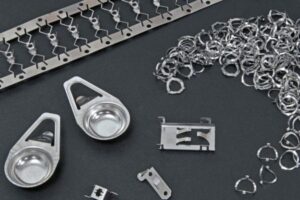 Thin Gauge Stainless Steel Pressing: Is It Right For Your Project?
Thin Gauge Stainless Steel Pressing: Is It Right For Your Project?
Manufacturers working in the medical, automotive, electronics and consumer goods sectors use thin gauge stainless steel primarily because it provides strength along with formability and corrosion resistance. The process itself combines thin gauge stainless steel with high precision pressing to deliver lightweight yet durable components with intricate shapes and a robust structural integrity.
Despite these obvious advantages, thin gauge stainless steel pressing may not work for every application. The selection of this material along with this process must match all aspects of the project. This includes design requirements and production volume as well as cost constraints and the all-important precision specifications.
The industry standard for thin gauge stainless steel sheet material exists when it reaches thickness levels below 0.5 mm. High-precision applications sometimes demand stainless steel sheets that reach 0.1 mm in thickness. Thin grades are more popular because they provide corrosion resistance together with hygiene benefits and extended lifespan, not to mention reduced material and weight costs. Thin gauge stainless steel materials can be used for products such as needle holders and shielding cans as well as mobile phone components and miniaturised sensor housings.
Using fine material has its own set of technical issues. During pressing operations stainless steel sheets at thin gauges develop work hardening which strengthens them but also makes them more difficult to work with. It’s a combination of optimised die design and tool surface finishes along with press speed adjustment that serves to prevent the formation of tears, distortions and burrs. This manufacturing process requires strict tolerance control and precise repetition as the final products move to high-volume production lines and stringently regulated markets.
Tooling
High-precision tooling remains an essential process although, by its nature, it creates costs that make it impractical for manufacturing small quantities or single items. Thin gauge pressing performs best with large volume quantities because tooling expenses distribute across multiple thousands and even millions of finished components. The process works brilliantly for large orders but small-scale clients who build prototypes or create limited quantities might need to consider different techniques.
The material properties of stainless steel need evaluation based on the needs of your final product. The excellent corrosion resistance and biocompatibility of 304 and 316 stainless steel can’t guarantee sufficient weight, conductivity or magnetic properties for certain applications. Alternative materials including copper alloys or aluminium can be considered instead. On a positive note, the durability of stainless steel against environmental stress factors leads to reduced maintenance expenses and extended operational periods that are frequently required for medical and other demanding environments.
Design
Component design also plays a pivotal role. The planning phase must resolve complex geometries as well as small-scale features and multi-step forming requirements. Clamason’s engineers who understand thin gauge pressing procedures will always identify ways to optimise designs for manufacturing purposes while preserving their operational integrity. The difference between success and production failure often comes down to design.
A successful project requires an experienced presswork partner but specialised knowledge about thin gauge stainless steel pressing operations can’t be taken for granted. Some press shops lack the necessary tooling, capability, and expert knowledge needed to maintain precise tolerances at these thin dimensions. A manufacturer like Clamason that provides toolmaking capabilities and develops processes and conducts real-time dimension monitoring will result in better outcomes and simpler project delivery.
It’s a Pressing Issue
Companies typically opt for thin gauge stainless steel pressing after considering a range of factors. Thin gauge stainless steel pressing exists as part of a comprehensive system that weighs performance characteristics against production capabilities. Thin gauge technology provides manufacturers with their most effective means of creating small high-performance components at large volume. It’s an ideal solution for manufacturers who need miniaturisation along with weight reduction while maintaining absolute quality standards.
The British Stainless Steel Association provides material-specific guidance for project alignment and Metal Forming Magazine published a recent case study demonstrating real-world implementation of thin gauge stainless steel pressing across the medical industries.
If you’d like to investigate Clamason’s approach to thin gauge stainless steel pressing, then please don’t hesitate to get in touch. We’d love to hear from you.
